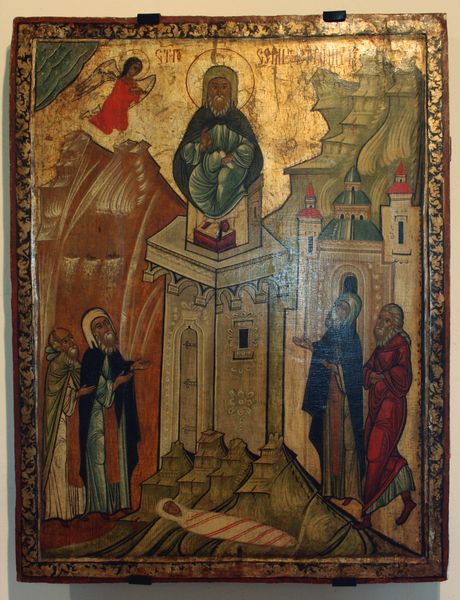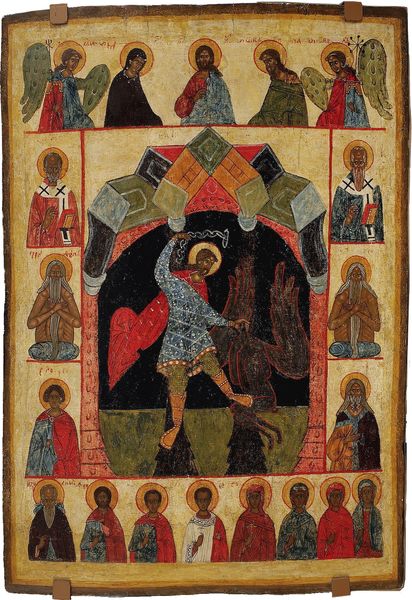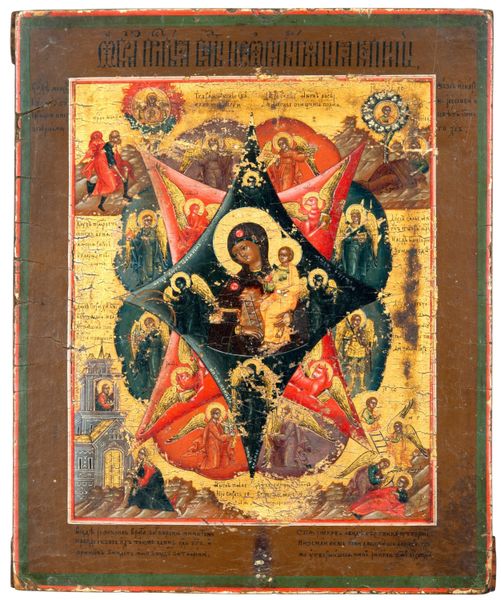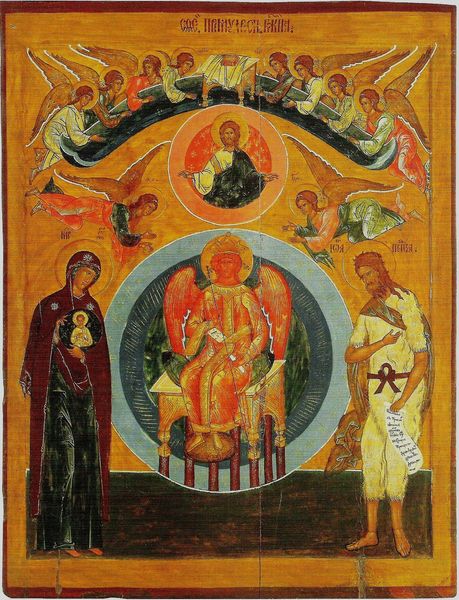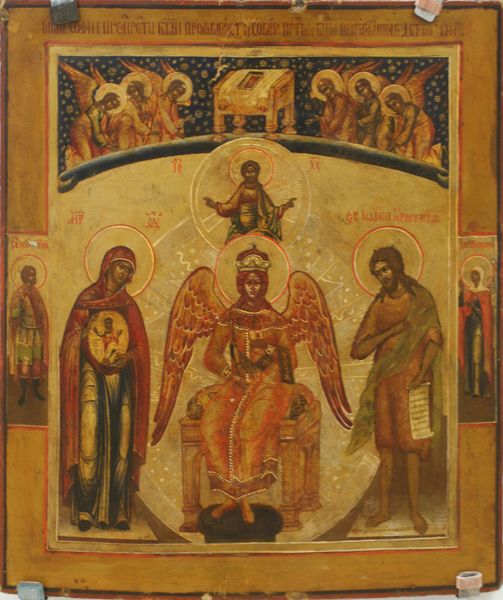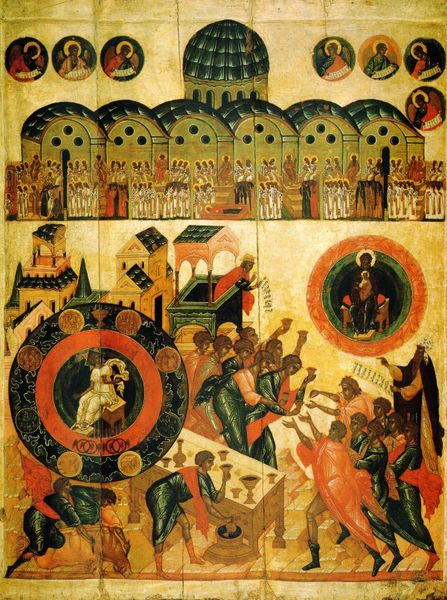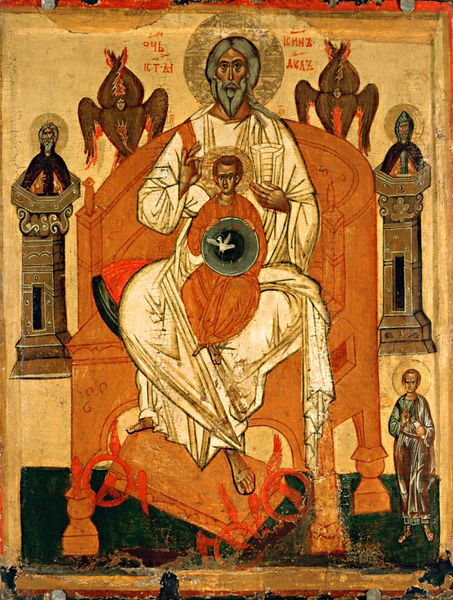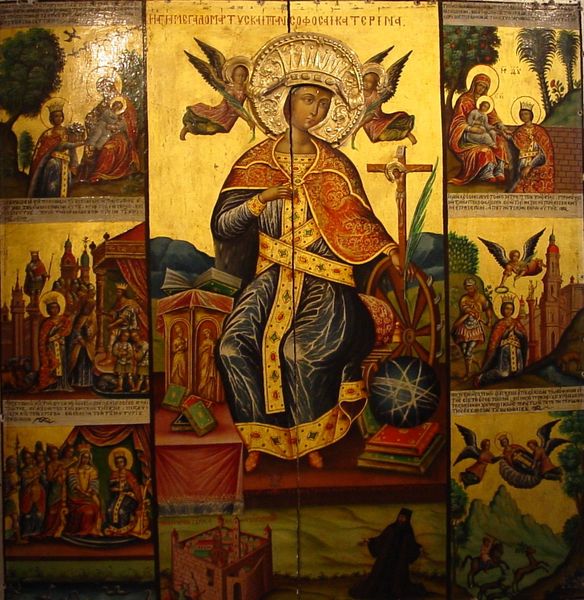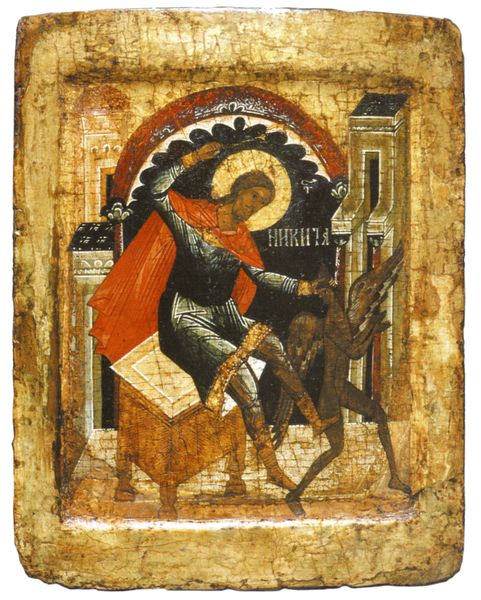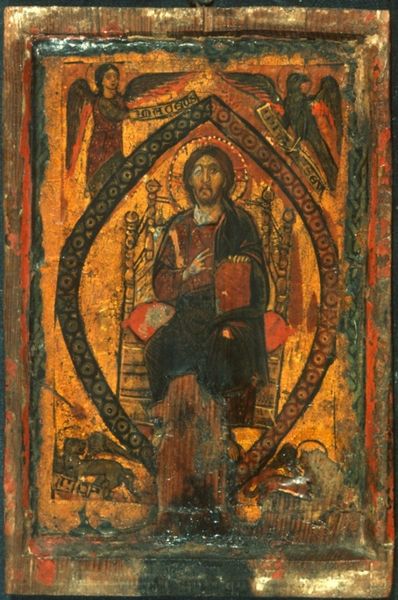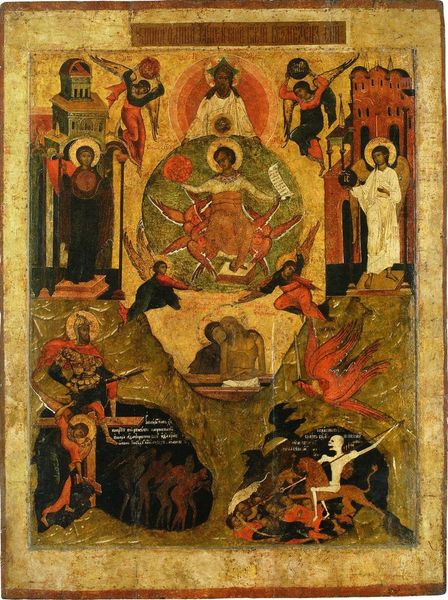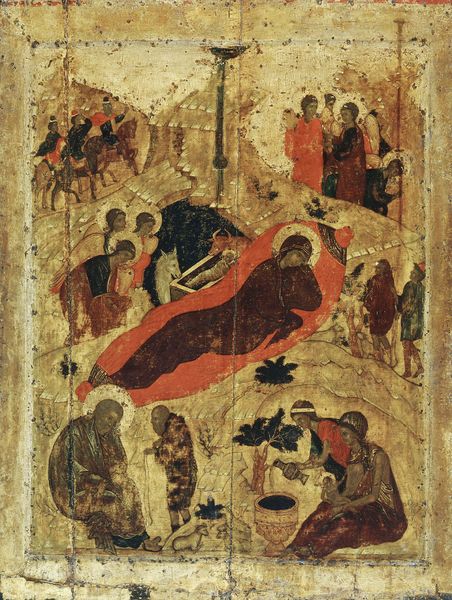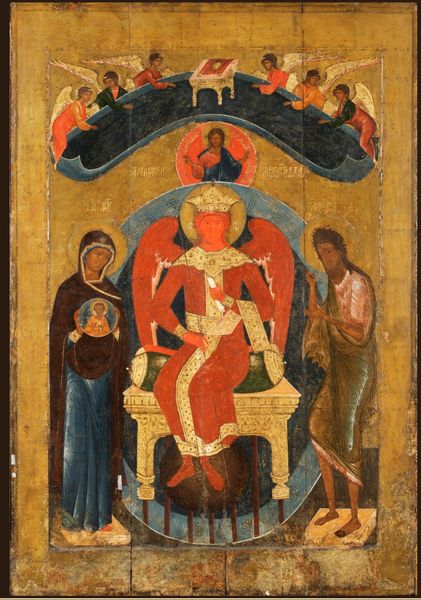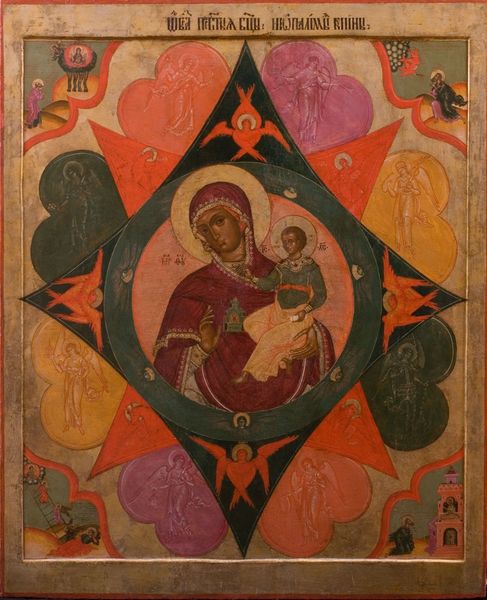
tempera, painting
#
byzantine-art
#
narrative-art
#
tempera
#
painting
#
figuration
#
oil painting
#
history-painting
Copyright: Orthodox Icons,Fair Use
Curator: This painting, made with tempera around 1800, depicts Saint Christopher and scenes from his life. The whole composition is very striking, don't you think? Editor: It's arresting. The stylized flatness combined with these saturated colors – the red robe especially jumps out against that golden ground. There's a dreamlike quality. What can you tell us about Saint Christopher, and why he appears to have the head of a dog? Curator: Well, this unusual depiction stems from a legend stating that Saint Christopher was of monstrous origins, sometimes described as a dog-headed man from a region near India. Early stories portray him as belonging to a race of cynocephali, literally "dog-heads." Editor: How fascinating that these 'monstrous' origins tie into his narrative! The surrounding scenes showing Saint Christopher interacting with the ruling powers. And what are these specific episodes meant to convey, historically? Curator: These vignettes showcase Saint Christopher's spiritual journey: his encounters with rulers, witnessing torture, and ultimately, his martyrdom by crucifixion, depicted over to the right. It encapsulates the transition from this figure, defined by physical difference, to one associated with service, faith, and devotion. In that light, Saint Christopher with scenes of his life captures his embrace of faith amidst hardship. Editor: I agree! But there's also an inherent commentary here about power, how the "civilized" world—symbolized by these Roman or Persian courts—persecutes the "outsider." I find myself reflecting on this persecution; there is something deeply subversive about this image. Curator: Yes, absolutely, I feel like, ultimately, it challenges our understanding of saintliness and it emphasizes the power of embracing the ‘other’. Editor: That makes the painting deeply powerful in ways that transcend its immediate historical or devotional context. Curator: Indeed, an unexpectedly complex exploration of faith and social marginalization embedded in the imagery of an early nineteenth-century Orthodox icon. Editor: Thank you! This has changed my perception. I feel that our discussion invites to consider these ideas in a new way.
Comments
No comments
Be the first to comment and join the conversation on the ultimate creative platform.
